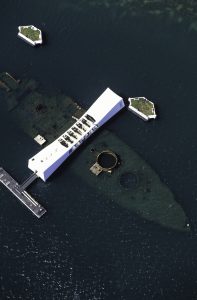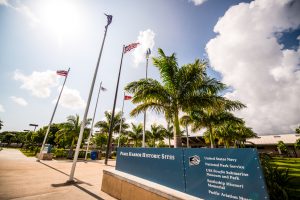“Yesterday, December 7, 1941—a date which will live in infamy—the United States of America was suddenly and deliberately attacked by naval and air forces of the Empire of Japan.” –Franklin Delano Roosevelt, addressing the US Congress

Pearl Harbor is a US naval base in Hawaii. Many people lost their lives that December, and we hold the 7th in remembrance of the dead. However, we understand the attack only from a romantic version of those events–either through short lessons in a history book or from the feature film. If you look closer, the event is much more complicated.
Before the Attack
The US and Japan had strained relations before any aggressive action was taken. In 1937, Japan showed hostility towards China, and in response, the US put trade embargos in place to show that we didn’t support those actions.
While both Japan and America engaged in peace talks, neither would budge on their position.
The US put their Pacific Fleet at Pearl Harbor. Even though it was an improbable target (The island is 4,000 miles from Japan.), there were cautions from inside the American navy.
Theoretical naval games were played years earlier, and the results were that Pearl Harbor was a dangerous weakness. Admiral James Richardson took information from these games and protested when the entire Pacific Fleet was moved there. However, President Roosevelt went ahead anyhow, going so far as to remove the Admiral from his office.

The Japanese sent a message to their American embassy 30 minutes before the attack. This was to declare war on America, thereby removing the evils of a surprise assault. However, the message was not only translated too late, but it was also confusing in its meaning:
“Thus the earnest hope of the Japanese Government to adjust Japanese-American relations and to preserve and promote the peace of the Pacific through cooperation with the American Government has finally been lost.
The Japanese Government regrets to have to notify hereby the American Government that in view of the attitude of the American Government it cannot but consider that it is impossible to reach an agreement through further negotiations.”
We can infer this meaning retrospectively, but the last two paragraphs of the message still seem deliberately unclear.
What Happened
The plan was to destroy the American Pacific Fleet, or at least cripple it enough that Japanese interests in the South Pacific would be unbothered.
The attack started at around 8 a.m. and continued for around 2 hours. Because of their intelligence gained from a spy, the Japanese knew where to strike and planned accordingly. Three waves came in, prioritizing targets like the battleships and the airfields.
The most devastating losses were sustained by ships like the USS Arizona. An 1800 pound bomb struck the ship, detonating their forward ammunition magazine. The ship sank with over 1,000 people trapped inside.
That was only one large event in a catastrophic attack. Twenty ships sustained intense damage and over 300 planes were destroyed. Even worse, 2403 people lost their lives that day.
The Aftermath

Pearl Harbor recovered from the assault quickly. While the military fleet was crippled, the support facilities were relatively untouched. (The repair docks, shipyards, and oil storage) Another strange stroke of luck was the strength of our aircraft carriers. They ended up being a huge asset during the war, and most were absent during the attack.
The most influential part of this day was the US entering World War II.
The attack unified the US, giving a solid reason for joining the war effort. The next day, President Roosevelt got the go-ahead from Congress to declare war on Japan. As Japan’s allies, Germany and Italy retaliated by declaring war on America. With this domino effect, we entered one of the world’s darkest conflicts.